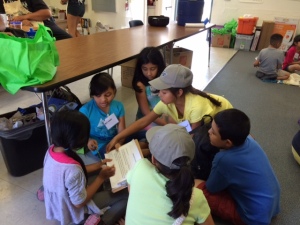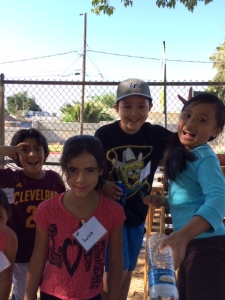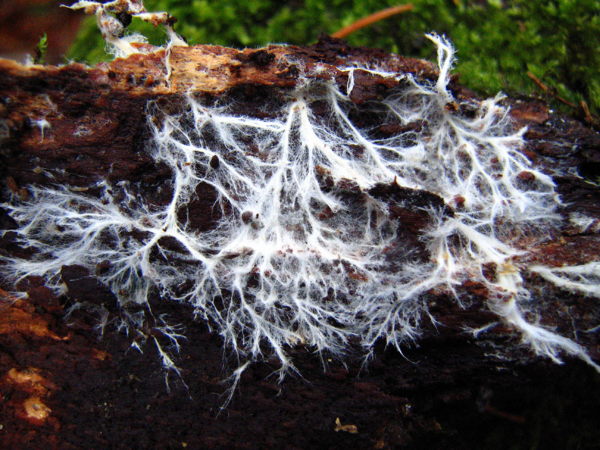Permeation of Permaculture – Part 2
How teaching children is a really deep form of permaculture in action?

The principles of Permaculture are valuable when designing an educational program for children. Permaculture’s fundamental principles and whole system approach not only complements my own educational philosophy of education, but is consistent in the way children encounter the natural and social worlds in which we all live. Students learn and retain knowledge when it is taught in context rather than as isolated facts.
Permaculture’s whole systems approach encourages students to observe patterns, recognize relationships and determine connections/interconnections. These observations and connections occur initially within a child’s immediate environment; and, in time, go beyond the classroom, to their family, neighborhood, the community and to the world. Like a ‘Dot-to-Dot’ puzzle, Permaculture helps students see the dots (elements), recognize the flow (patterns) and placement of the dots (relationships) to complete an entire picture (system); thus, creating a wonderfully, complex picture (structure). Through time, the perspectives, relationships, and connections develop into a rich tapestry.
Through observations and interactions, students are able to discern how each element plays a significant role in an organization. Students easily transfer this concept to the system we call the classroom. Children quickly see the classroom as an ecosystem where each individual is a valued asset, contributing a variety of skills/talents to the success of the learning environment.
A prime example of this happened during our ‘permie’ gardens summer camp this past year. While focusing on the principle, “Apply self-regulation and accept feedback”, the students became aware, through self-reflection, the impact their actions/inactions had on the whole system (gardens camp). This not only illustrated to the students that actions do have consequences; it also empowered them to take control of their actions and decisions. It’s like the dropping of a pebble in the water and watching the ripples grow outward. Drop a Pebble in the Water

Another of the many benefits to using Permaculture with children is how problems are used as a part of the solution. Children are guided to see that problems can be a matter of perspective. This encourages students to observe and listen to other’s viewpoints/perspectives prior to considering a solution. These viewpoints are then used creatively to solve problems. This is yet another way to help children become critical thinkers and problems solvers: a major goal of mine as an educator.
It’s About Perspective
Permaculture’s method of ‘systems thinking’ illustrates a continuum model of learning instead of the typical linear model of education. This continuum-learning model establishes students as eternal learners and problem solvers.
My Goal: Permaculture in perpetuity!!
A great illustration of this continuum is summed up in the following:
- Networks: All living things are connected through relationships as a ‘web of life’.
- Embedded systems: Each system is a complete set while also being a subset of a larger set. Changes in one system do affect the whole system.
- Cycles: Everything goes through cycles; examples seasons, water, people, plants, etc.
- Flows: There is a continual flow of energy (inputs and outputs).
- Evolution: Changes do occur over time through development, learning, and adaptation.
- Dynamic Balance: Systems act as a feedback loop to maintain an equilibrium, which provides for resiliency.
Think of the school as an ecological garden:
You have a diverse group of individuals, each with their own personalities, strengths, and weakness. Using those assorted traits (elements), a common goal can be achieved through mutual respect and cooperation. As in Permaculture, each student provides different abilities, talents and personalities to the classroom. The wealth of variety creates a more well-rounded and resilient organism. I have never been one to want a homogeneous classroom in which all the students are basically the same in knowledge, age, academic level, or any other determining factors schools impose on children. In my experience, each individual adds to the beauty of the classroom. This classroom encourages students to acknowledge, accept, and appreciate each other as individuals and a valued member of the class. In addition, students learn the ability to consider differing viewpoints and to defer judgments before reaching a conclusion. Students in this ‘permaculture’ class develop the ability to deal with complexity and ambiguity while focusing on the ultimate goals: productive, creative thinking individuals that take care of themselves, others and the world. Permaculture adds an additional 3 R’s to education:
Restore – Rejuvenate – Regenerate
At the risk of redundancy, here is how I do Permaculture in teaching:

PERMACULTURE IS A WHOLE SYSTEMS APPROACH
- As I have mentioned several times before, one should look at the whole child; the sum is greater than the sum of their parts. We are human beings, not separate characteristics and abilities.
PERMACULTURE ETHICS: 
- Care of the earth – care of people – share extras
- These are principles to live by whether in school or in life.
- Teaching children to take of themselves/others.
- Be a part of creating a world worth living.
- We are all a part of this world; let’s learn how to live together.
OBSERVE AND INTERACT: 
- Observation is crucial to teaching/assessing children, not standardized tests.
- Know the student’s learning style to work with one’s strengths.
WORK WITH NATURE, RATHER THAT AGAINST IT
- Why? Mother Nature has been at this long before we arrived on the scene.
- Ask the question: How would nature do it?
- I have used Janine Benyus’ basic tenants of nature [1] when asking this question:
- Nature runs on sunlight.
- Nature uses only the energy it needs.
- Nature fits form to function.
- Nature recycles everything.
- Nature rewards cooperation.
- Nature banks on diversity.
- Nature demands local expertise.
- Nature curbs excesses from within.
- Nature tapes the power of limits.
- See what happens when we do try to fool her:
- You Can’t Fool Mother Nature:

- You Can’t Fool Mother Nature #2
- You Can’t Fool Mother Nature:
- Kids are naturally curious, observant, why work against it? Kids need active learning; Permaculture is active learning.
- Education today is about obedience and testing.
- Could this be why we have many discipline problems in schools today?
- I have used Janine Benyus’ basic tenants of nature [1] when asking this question:
CONNECTIONS: EACH ELEMENT PERFORMS MULTIPLE FUNCTIONS:
- Look at the child as a whole within a system (classroom) within a school, within a family within a neighborhood within a community. It’s all connected.

Happy Campers!
- Students learn to work independently within the system while also learning cooperative learning.
- Interconnections/relationships are important to teaching children – same in permaculture it’s all about interconnections and relationships.
- As a teacher, you want to build the relationship between the students, the parents, and each other for the optimum learning environment.
- Kids don’t learn and retain in bits and pieces – they build on prior experiences.
- Recognize the wonders and beauty in the world we live that is built on relationships/connections.
- No Man is an Island by John Donne
- Connections and interconnections are important: Why are the internet/social networks/LinkedIn/others so important/popular today?
APPLY SELF REGULATION AND ACCEPT FEEDBACK:
- Apply self-regulation and accept feedback is a very simple way to conduct a classroom.
- Actually it’s how we should conduct ourselves throughout our life.
- Actions do have consequences.
- Empowers us to take control of our lives.
CATCH AND STORE ENERGY AND MATERIALS:
- We typically think of inanimate objects when referring to the use and value of
 resources, but what about people and other living beings?
resources, but what about people and other living beings?
- Each person/generation has something worthwhile to contribute to the greater good.
- Each and every living creature has a role to play on this earth.
EACH ELEMENT PERFORMS MULTIPLE FUNCTIONS:
- We all have more than one asset – talent – skill: Multi-faceted

EACH FUNCTION IS SUPPORTED BY MULTIPLE ELEMENTS:
- Use a variety of methods to get the point across.
- Let’s look at the many ways people learn: audible, visual, kinesthetic, tactile,
- Hands-on experiences helps kids remember when they dig in.
- Learn by doing.
MAKE THE LEAST CHANGE FOR THE GREATEST EFFECT:
- Think small – take small steps and build on those successes – example in reading, kids feel they don’t know how to read, but if you show them the words they do recognize, they quickly realize things are not as insurmountable as they may seem.

- Creatively use and respond to change – be observant – be flexible – work on your successes – the smallest action for the largest outcome.
- Domino effect
- Ripple effect in water
- One drop erosion
- Leverage points
USE SMALL SCALE, INTENSIVE SYSTEMS:
- Think of eating a large hamburger, one bite at a time.

- Build on your successes.
- Each child has a talent/skill – why not build on the strengths to overcome the weaknesses?
- Story of the hare and the tortoise-slow and steady win the race.
- Make errors when the consequences are small, not when the consequences are large.
USE AND VALUE DIVERSITY:
- Each person/generation has something worthwhile to contribute to the greater good.
- Things working in concert make beautiful music.
USE EDGES AND VALUE THE MARGINAL: 
- That’s why I’m an Edge-ucator.
- All the action is on the edge/fringe: WEATHER FRONT – FENCES
- Just think of all the fringe benefits!
- Along with the value of diversity – be yourself don’t have to follow the mainstream.
OBTAIN A YIELD:
- Obtain a yield – reward yourself – intrinsically – extrinsically.
- Eliminates ‘busy work’ kids are smart enough to know when they are given busy work that produces nothing.
- Kids see reason/rational for the task at hand.
TURN PROBLEMS INTO SOLUTIONS: OR THE PROBLEM IS THE SOLUTION:
- Help students see that humans can be the solution rather than the problems on the earth.
IN CONCLUSION: Permaculture is the mycelium of all my teaching and education. It provides the visible and invisible structures from which I base all my work in educating others. As Paul Stamets so eloquently states, “I believe that mycelium is the neurological network of nature.” [2] In large part, Permaculture is my neurological network from which my work flows.
I truly believe that Permaculture can help save the world!

FOOTNOTES AND RESOURCES:
[1] Janine M. Benyus, Biomimicry: Innovation Inspired by Nature, 2nd ed. (William Morrow Publishing, 2002), page 7.
[2] Paul Stamets, Mycelium Running: How Mushroom Can Help Save the World, 1st ed. (Ten Speed Press, 2005), page 2.






